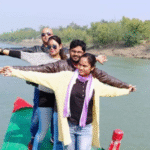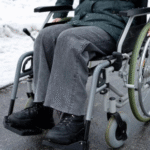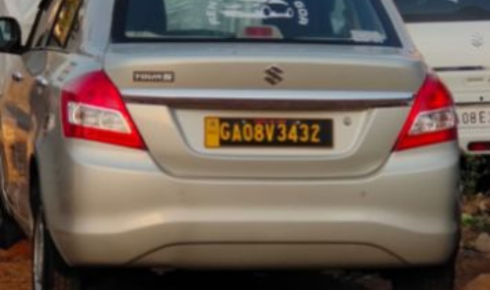1. When is the best time to undertake a road trip across Europe?
It is generally late spring through early autumn (May to September), when the weather is lovely, and most tourist attractions are accessible. In peak summer months, it might get very crowded. Shoulder seasons would be good choices: May and June or September and October.
2. How do I plan a road trip across Europe?
Start by choosing your route, setting a flexible itinerary, booking accommodations in advance, and preparing your vehicle. Research road laws, traffic rules, and destinations to visit along the way.
3. Do I need an International Driving Permit (IDP) for a road trip in Europe?
For a driver from outside the EU, an IDP is highly recommended. Some countries require it along with your national driver’s license, but check the requirements of the countries you plan to visit.
4. How long does it take to drive across Europe?
It depends on the route, but driving through Europe can take anything from a few days to weeks. For example, the Lisbon-Istanbul road trip takes about 2-3 days when traveling non-stop; however, with stops, it will take 1-2 weeks.
5. Which documents do I require to make a road trip in Europe?
You will require your passport, driver’s license (with an IDP if necessary), car registration documents, and travel insurance. It’s also recommended to carry copies of these documents in case of emergencies.
6. How do I discover the best routes for a European road trip?
You can use online sources such as Google Maps, travel blogs, and road trip guides. Many apps give scenic routes, historical landmarks, and alternative paths that may enhance your experience.
7. What should one pack for an overland European trip?
There are some key documents, including a first-aid kit and some comfortable clothing, a power bank, snack, travel pillow, maps, and a car charger. I will also prepare for the current weather and be equipped with my camera to shoot some memories during this trip.
8. How should I read Europe’s road signs and traffic laws?
Road signs are mostly international or standardized across Europe, but familiarize yourself with country-specific rules before traveling. Be aware of speed limits, alcohol consumption limits, and parking regulations in each country.
9. What types of vehicles are best for a road trip in Europe?
A compact car would be best suited for European cities, while a larger vehicle is best suited for long road trips with multiple passengers. A camper van or RV would offer the flexibility and accommodation if you are going to camp along the way.
10. Is it possible to rent a car for a European road trip?
Yes, car rentals are widely available across Europe. It’s advisable to book in advance to secure a vehicle that suits your needs. Be sure to check the rental policies, insurance options, and mileage limits.
11. Is it safe to drive in Europe?
Europe is generally safe for driving, with well-maintained roads and clear traffic rules. However, driving conditions can vary by country, so it’s essential to stay alert, especially in rural or unfamiliar areas.
12. Do I need to pay tolls while driving in Europe?
Many European nations charge tolls on highways in France, Spain, Italy, and Portugal, among others. You can also pay toll using cash or card at the designated booths or in electronic toll ways such as with a telepass.
13. What are speed limits in Europe?
Speed limits are different for various countries and roads. On highways, the limit will be usually from 120 to 130 km/h. The limit is typically around 50 km/h in urban areas. Always look out for local signs for the limit.
14. How do I avoid driving through the busiest areas of European cities?
Consider using public transport in large cities to avoid traffic congestion and limited parking. If you do need to drive, plan your route to avoid peak hours, and use your navigation apps for real-time traffic information.
15. Can I drive from one country to another in Europe?
Yes, you can drive across European borders without border checks in the Schengen Area. But some countries outside this area might have border controls, so you should always carry your passport and documents.
16. What is the legal drinking age in Europe?
The legal drinking age varies between countries. In most European countries, the drinking age is 18, but in some regions it is 16 for beer and wine, while in others, it is 21 in places such as the UK and Ireland.
17. What insurance do I need for a road trip across Europe?
It is prudent to ensure full car insurance, which will cover damage, theft, and third-party liability. One should not forget travel insurance: you can get medical emergencies or cancellations protected.
18. How do I avoid parking in cities?
You can look for places outside the cities with accommodations where you have parking services or book accommodations which offer parking services. Alternatively, use apps that indicate where to park without problems.
19. Which side of the road am I supposed to drive on in Europe?
You’ll be driving on the right-hand side of the road in most European countries except in the UK, Ireland, Malta, and Cyprus, which are left-hand traffic countries.
20. Which places should I definitely visit when doing a European road trip?
Popular destinations include the Amalfi Coast, in Italy; the Scottish Highlands; the French Riviera; the Swiss Alps; tulip fields of the Netherlands; Barcelona in Spain; the scenic routes along Norway.
21. How do I overcome the language problem while traveling across Europe?
Learn basic phrases in the local language, like “hello,” “thank you,” or “please.” Most Europeans understand English, especially in tourist areas, and translation apps can fill the gaps.
22. What should I do if I break down on a road trip?
Make sure your rental car has roadside assistance included. If you break down, contact your rental company or a local breakdown service. Always carry a charged phone with emergency contacts.
23. Can I travel by camper van across Europe?
Yes, camper van traveling is very popular in Europe. There are numerous campsites and routes that are amenable to RVs. You should also get to know the local regulations concerning camping and parking.
24. How can I reduce driving fatigue on long journeys?
Take frequent breaks, keep hydrated, and do not drive for long hours at a stretch. If you are traveling with someone, take turns driving and listen to music or podcasts to keep yourself awake.
25. Are there any treacherous roads to steer clear of in Europe?
Some roads, like those in the Alps, the Pyrenees, and the Carpathian Mountains, can be difficult to navigate because of steep gradients and narrow passes. Always check weather conditions and road closures before leaving.
26. Do I need to use a GPS or maps for navigation?
The easiest way to navigate with a GPS is especially with real-time traffic updates. However, it is always a good idea to have a physical map on hand in case you lose signal or need extra help.
27. How can I find the best places to eat while on a road trip?
Use apps like TripAdvisor, Yelp, or Google Reviews to find local eateries. Ask locals for recommendations for authentic food experiences along your route.
28. What are the best road trip snacks for a long journey?
Pack non-perishable snacks like nuts, granola bars, dried fruit, and crackers. You can also bring fresh fruits, sandwiches, and bottled water to stay refreshed during your journey.
29. What should I budget for a Europe road trip?
Your budget will depend on the countries to visit, duration, and the types of accommodations. To give you a general idea, you might need to include car hire, petrol, tolls, food, accommodation, and exploratory costs.
30. Is it relatively easy to find filling stations across Europe?
Yes, gas stations are easily accessible in most European countries, especially along highways. However, it is a good idea to monitor fuel levels, especially when traveling through rural areas.
31. Can I use my mobile phone for navigation on a road trip?
Absolutely you could use navigation applications like Google Maps or Waze for real-time directions. Please ensure you bring a car charger and an international data plan, or Wi-Fi access.
32. What happens if I become lost on my road trip?
Stay calm, use your GPS or maps to get back on track, and don’t hesitate to ask locals for directions if necessary. It’s always a good idea to stop and reassess your route if you’re unsure.
33. How do I stay connected with friends and family during a European road trip?
Your mobile phone should work internationally or you can buy a local SIM card. You can also use the Wi-Fi hotspots provided by hotels, cafes, and public areas to get internet access.
34. Do I need to buy an international road map?
While using GPS apps is usually enough, it’s always a good idea to buy an international road map in advance-especially for regions with difficult internet access, or for driving on scenic backroads.
35. What are the specific customs or etiquette to keep in mind while driving in Europe?
Always yield to pedestrians, indicate when you’re changing lanes or turning, and follow the speed limits. Most countries require carrying a reflective vest and a warning triangle in the car. Just be a decent driver.
36. How do I avoid getting fines from traffic when going on my road trip?
Keep up with local traffic laws, parking in designated places, speed limits, and carefulness with the speed cameras-they are common in most European countries. Keep all your driving documents handy.
37. Can I rent an electric car for a road trip across Europe?
Yes, electric car rentals are available in many European cities, especially in countries that encourage eco-friendly travel. Be sure to research charging station locations along your route.
38. How do I find places to stay during a road trip?
Book hotels, motels, or Airbnbs in advance, especially during peak tourist seasons. You can also use apps like Booking.com, Airbnb, or Hostelworld to find accommodation along your route.
39. Which road trip apps should I download for Europe?
Google Maps, Waze, Parkopedia (for parking), and Roadtrippers, to find routes, services, restaurants, and places to see. Download a local travel guide for a particular country as well.
40. How do you drive in foreign traffic conditions?
Familiarize yourself with local road laws and driving etiquette prior to embarking on your adventure. In a busy city, try to take off-peak hours, especially if you want to avoid peak hours.
41. Should I avoid driving in big cities?
If you have a fear of city traffic or limited parking options, consider using public transportation or lodging outside of metropolitan areas.
42. How do I find charging stations for electric vehicles?
You can find charging stations through apps such as PlugShare or Google Maps. Most of the charging stations are also close to major highways and tourist spots.
43. How do I pay for toll roads in Europe?
Mostly, you pay cash or with your credit card at the booths, but France and other places use electronic systems. You can purchase a transponder in advance and load it to pay at any time.
44. How far in advance should I book accommodations for a road trip?
Book accommodations in advance, especially during peak seasons or if you plan to stay in popular tourist areas. For flexible road trips, booking the night before or a day in advance works for less busy destinations.
45. How do I keep my car safe while traveling in Europe?
Always lock your car and park in well-lit, busy areas. Don’t leave anything of value inside an unlocked vehicle and use a hotel safe when not in your room.
46. Can I drive to out-of-the-way villages in Europe?
Yes. Some of the most picturesque villages can be reached by car. You’ll want to investigate road conditions and access when heading to these isolated areas because many roads may be very narrow and some might have special vehicle requirements.
47. Are there any special considerations for driving through mountainous areas?
When driving through mountains, be prepared for steep roads, winding turns, and sudden weather changes. Ensure your vehicle is in good condition, and drive slowly and carefully.
48. How do I manage fuel costs during my road trip?
Use apps that compare fuel prices along your route. Drive with efficiency by not accelerating suddenly, braking, and idling for too long. Try to refuel in countries that have lower gas prices.
49. What are some of the most scenic drives in Europe?
Famous scenic routes include the Atlantic Road in Norway, the Amalfi Coast in Italy, the Pyrenees in Spain, and the Romantic Road in Germany. Each route offers breathtaking views and charming towns to explore.
50. How do I stay flexible with my road trip itinerary?
While it is helpful to plan key stops, some flexibility for spontaneous detours or exploring hidden gems along the way should be left open. Keep your schedule light so you can enjoy unplanned experiences.
These answers provide valuable insights to make your European road trip an enjoyable and memorable experience!











